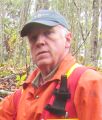IMPLEMENTATION OF WHOLE-SYSTEM, WATER BALANCE APPROACH: “The challenge is to move from stop-gap remediation of in-stream problems to long-term restoration of a properly functioning watershed,” stated Peter Law, Vice-President of the Mid Vancouver Habitat Enhancement Society

“By sharing the story of Shelly Creek, we want readers to recognize that erosion is a common issue impacting salmon and trout habitats in small streams, draining into the Salish Sea,” states Peter Law. “Existing standards of practice have resulted in negative impacts. Continuing to use those standards will result in further environmental degradation of the watershed and loss of stream productivity. Building support for action starts with community engagement.”










